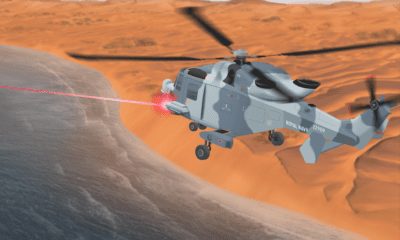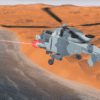
Defense
DARPA Updates on CODE-Equipped Drone Swarm Project
In the latest from military drone development, the US has been testing interconnected, co-operative drones that are capable of working together to overwhelm adversaries. The US Defence Advanced Research Projects Agency (DARPA) announced that a swarm of unmanned aerial vehicles equipped with CODE successfully carried out mission objectives, even when communications were offline and GPS was unavailable.
Paul Scharre from the Centre for a New American Security think tank says that the basic idea of a drone swarm is that its machines are able to make decisions among themselves instead of being individually directed by a human controller. While a combat zone is a lot more chaotic than a construction site or a quiet patch of sky a robotic swarm can be effective if it responds to missiles whizzing by as well as to electronic attacks on its communications and GPS.
It is this challenge of conducting operations in denied or contested airspace that DARPA claims has been met to an extent with its Collaborative Operations in Denied Environment (CODE) program which aims to adapt and respond to unexpected threats for existing unmanned aircraft that would extend mission capabilities.
The biggest advantage of a ‘swarm’ is the ability of machines to work together in numbers. CODE intends to focus on developing and demonstrating improvements in collaborative autonomy. The unmanned vehicles would continuously evaluate their own states and environments and present recommendations for coordinated unmanned aircraft actions to a mission supervisor, who would approve or disapprove such team actions and direct any mission changes. Using collaborative autonomy, CODE-enabled unmanned aircraft would find targets and engage them as appropriate under established rules of engagement, leverage nearby CODE-equipped systems with minimal supervision, and adapt to dynamic situations such as attrition of friendly forces or the emergence of unanticipated threats.
Next to the runway at the U.S. Army’s Yuma Proving Ground, six RQ-23 Tigersharks fitted with an array of sensors onboard lifted off. The mission team inside a small operations center tracked the aircraft and as many as 14 additional virtual planes on an aerial map.
The capstone demonstration paired program performer Raytheon’s software and autonomy algorithms and Johns Hopkins University Applied Physics Laboratory’s White Force Network to create a realistic, live/virtual/constructive test environment. During four demonstration runs, the team activated a variety of virtual targets, threats, and countermeasures to see how well the Tigersharks could complete their objectives in suboptimal conditions.
Scott Wierzbanowski, the DARPA program manager for CODE in the Tactical Technology Office said, “Current procedures require at least one operator per UAV in the field. Equipped with CODE, one operator can command multiple aircraft; and in a denied environment, the aircraft continue toward mission objectives, collaborating and adapting for deficiencies.”
























